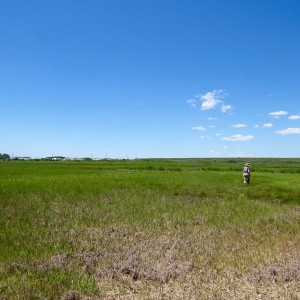Sad to say that after six months, I have now finished up my CLM internship with the New England Wild Flower Society. I must say, I wouldn’t trade the experience for anything, but I’m quite happy to be off the Boston roads! I’ve learned so much since starting this internship, most importantly I have gained so many skills in botany. I came to this internship being able to identify most common trees, and I left with the skills to use a dichotomous key to key out most plants, and the sight ability to identify many of the common native plants of the northeast. In addition to the skills, I’ve learned that I LOVE knowing what plants are around me. In addition to my new found love of botany, I have developed skills in group work, field knowledge, and interacting with landowners.
The fall brought a wonderful change to Boston (as it always does in New England), and I felt like I got an extended Fall, as we got the colors all the way from Maine to Connecticut and then I travelled to North Carolina and caught the colors there! The fall brought relief from the terrible hot weather we had this summer, bringing with it some rain too. We reached our goal of 200 collections and then some, ending with 305 collections for the year.
As I reflect on my time in Boston, I think about some of my favorite things. My favorite seed to collect was Ilex verticillata once the leaves fell, as the berries could simply be raked from the branches. My favorite day in the field was one day at Pachaug State Forest in Voluntown, CT. It was early November and just two of us were in the field that day, and the forest was simply beautiful! My favorite field site was private property on Cape Cod, MA that used to be cranberry bogs. My favorite activity we did as a group was one day when we had some extra time we adventured to Cape Cod National Seashore. I am so fortune to have explored coastal New England from Scarborough Maine to Hammonassett Beach, Madison, CT throughout this internship.
Looking towards the future, I will be attending the University of Connecticut as a graduate assistant in the Natural Resources Department. I look forward to learning more about management and building my skills towards a career in land management.
Below are some pictures from throughout my time in New England. 









My wonderful side-kick, Daisy, welcomed me home!
Thanks to NEWFS and CBG for everything.
–Julia Rogers, NEWFS, SOS-East
























